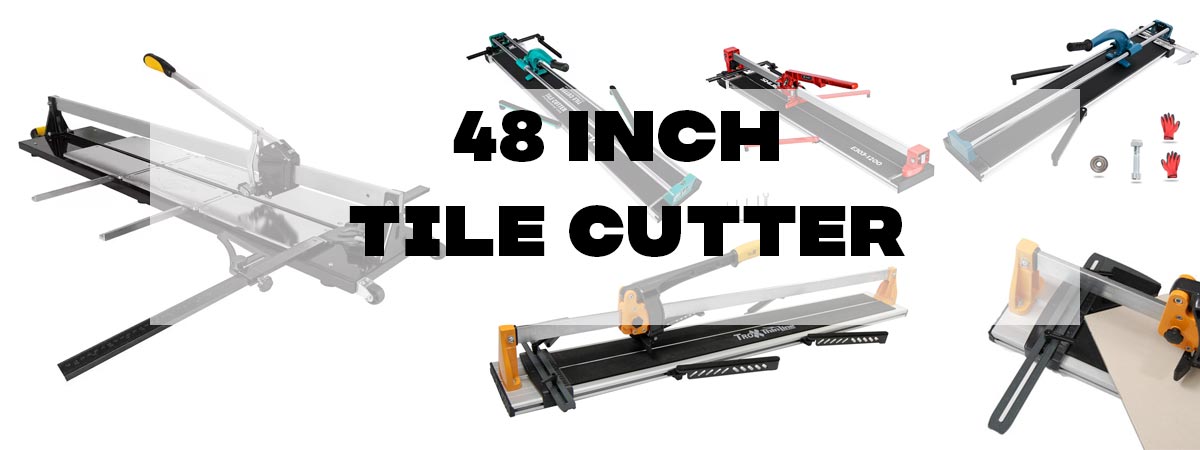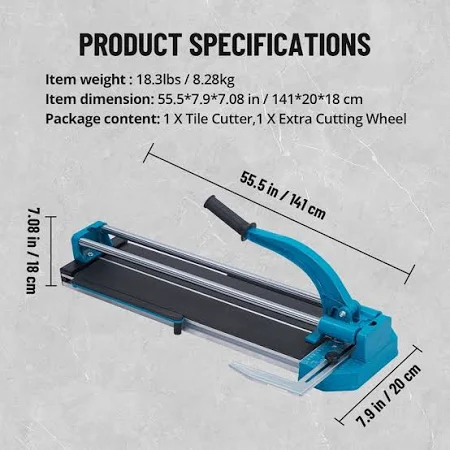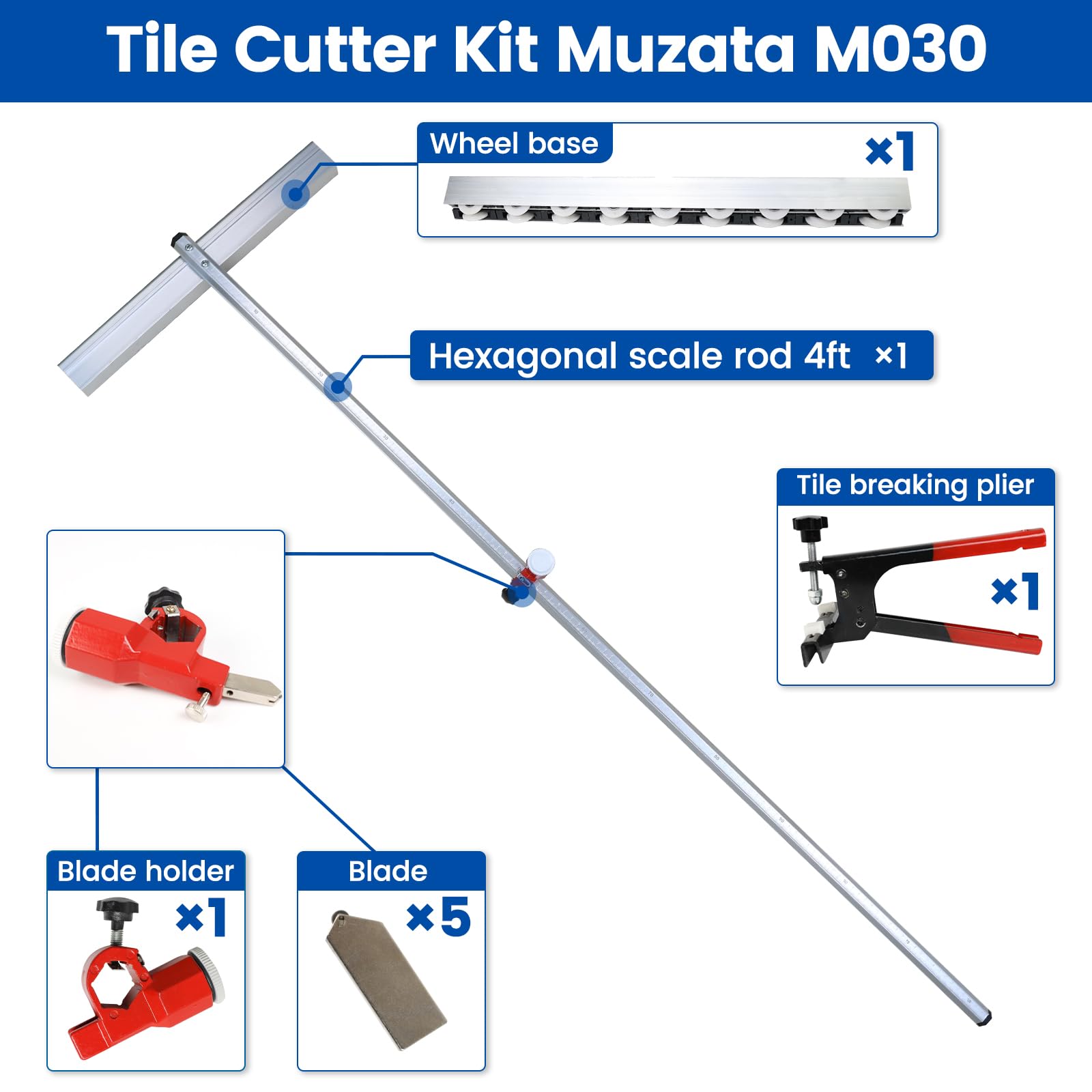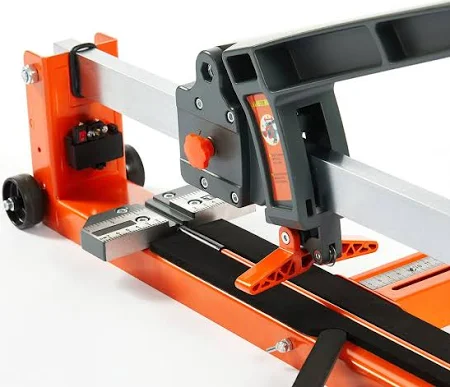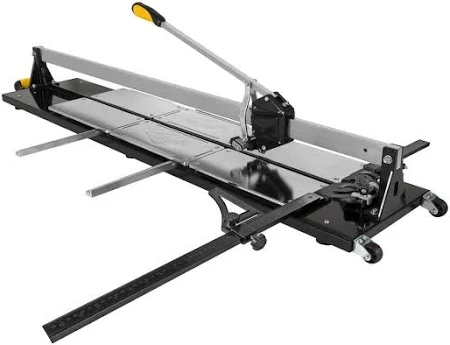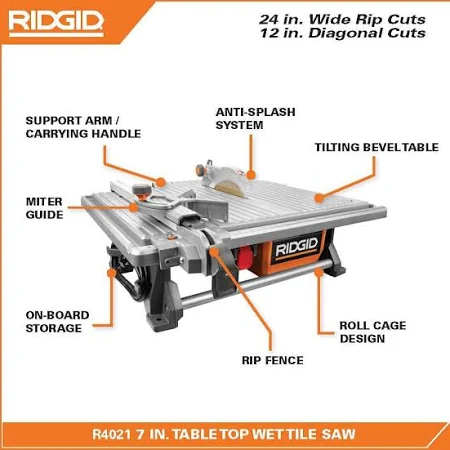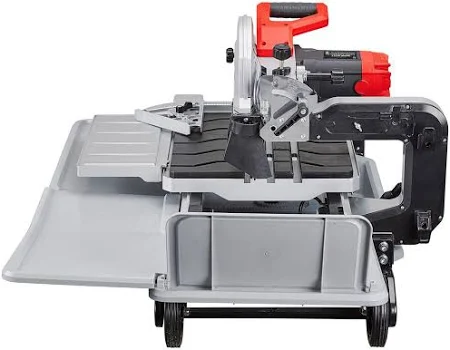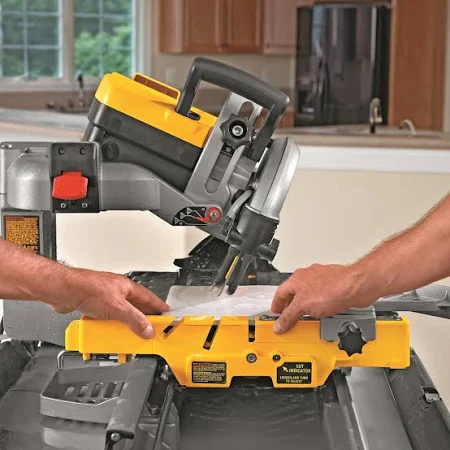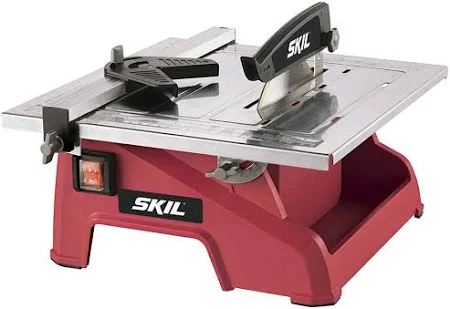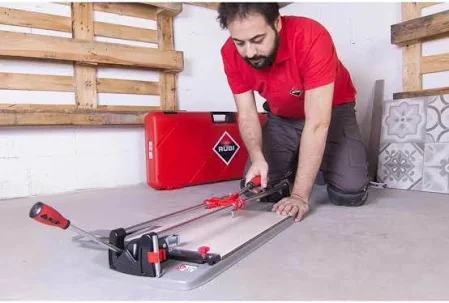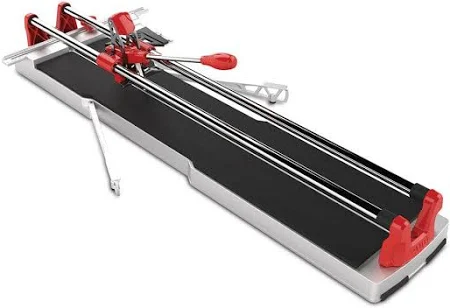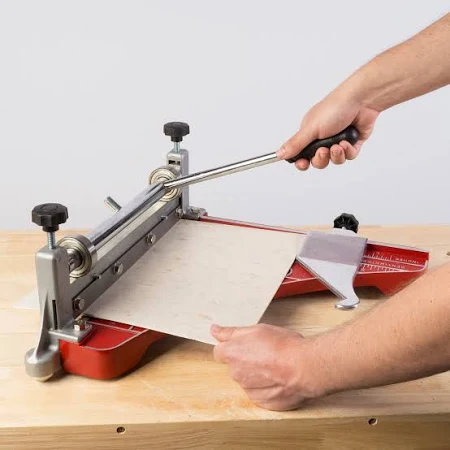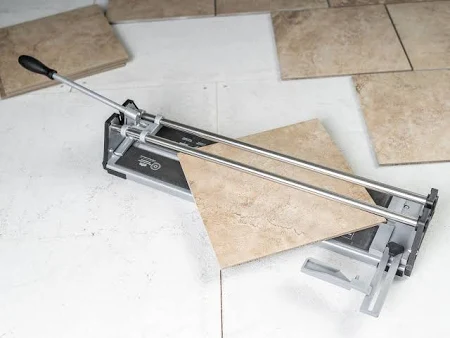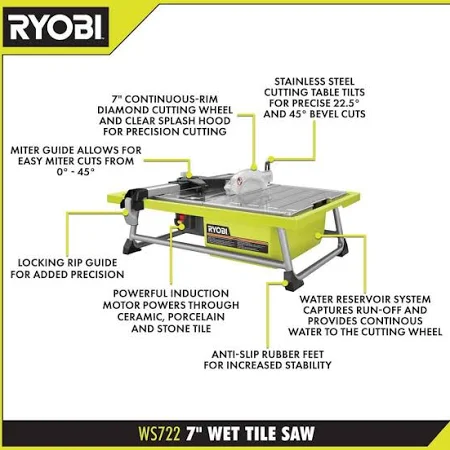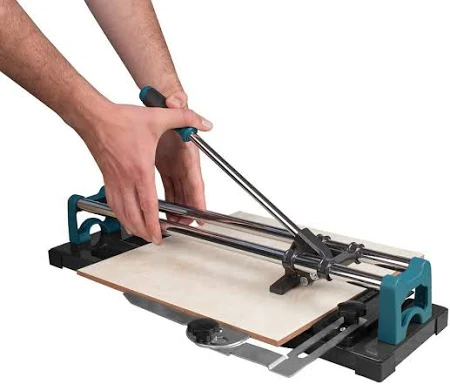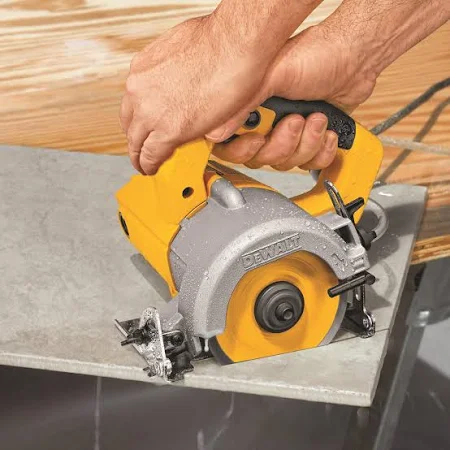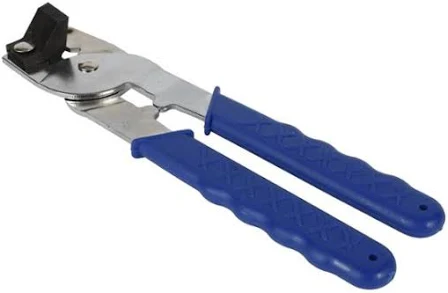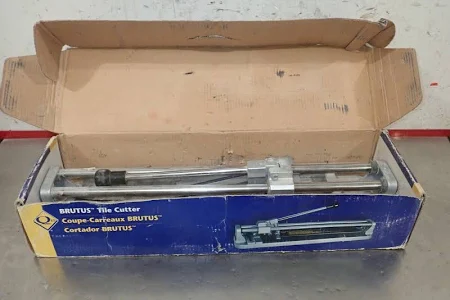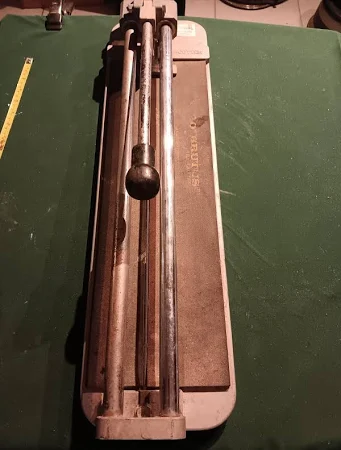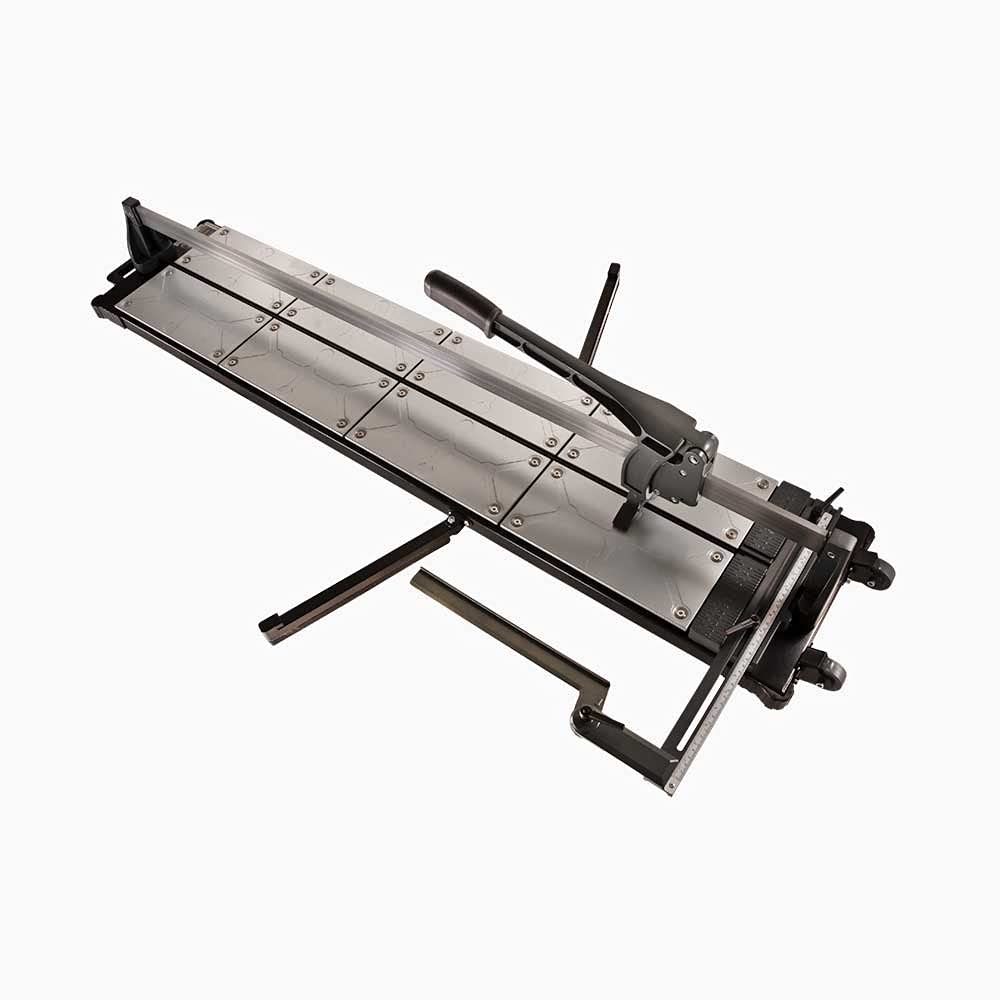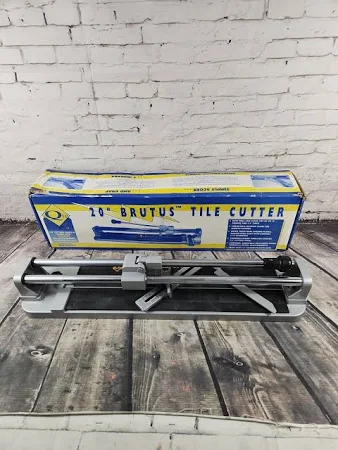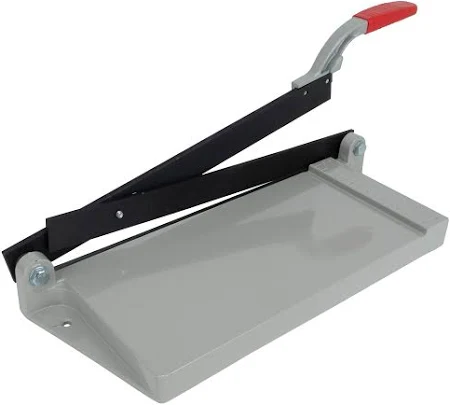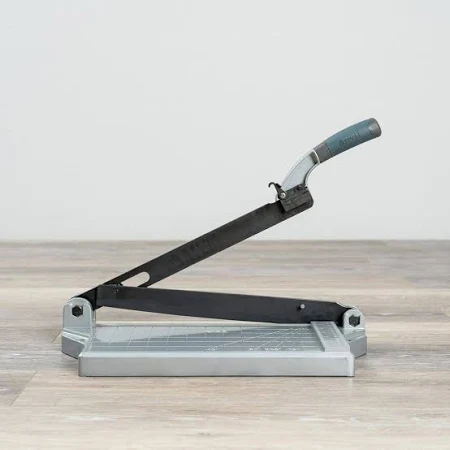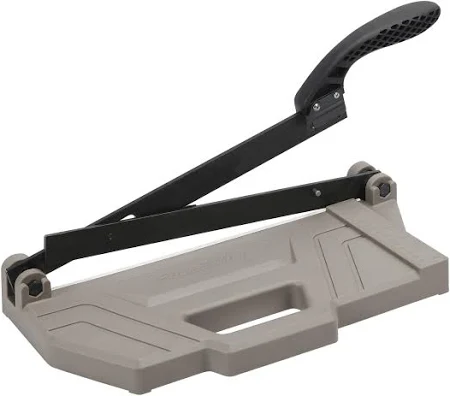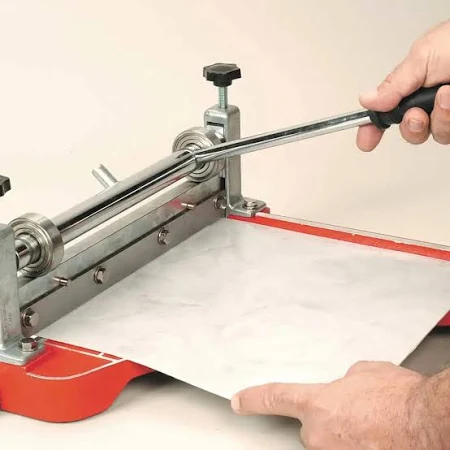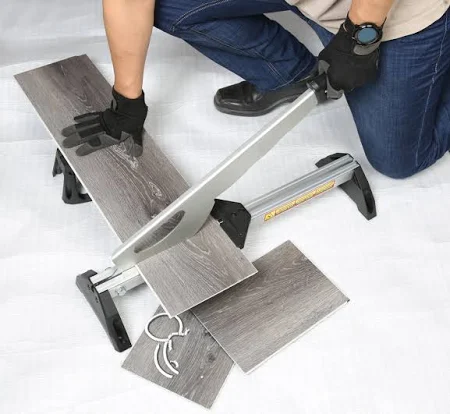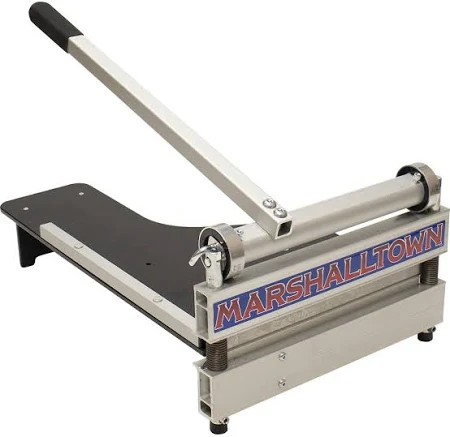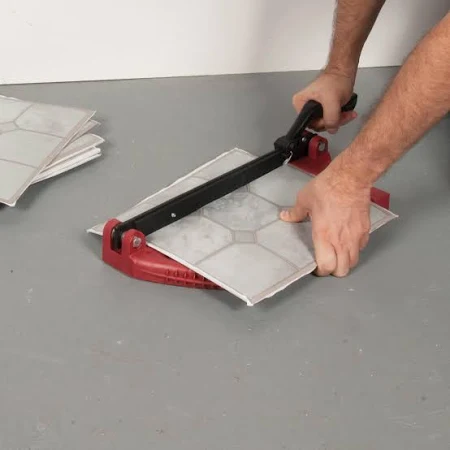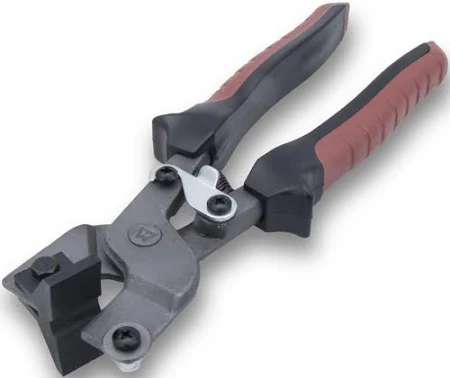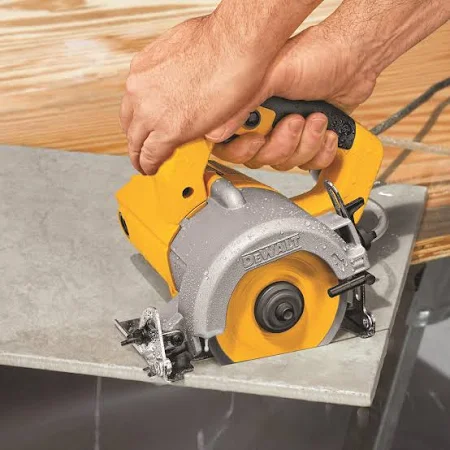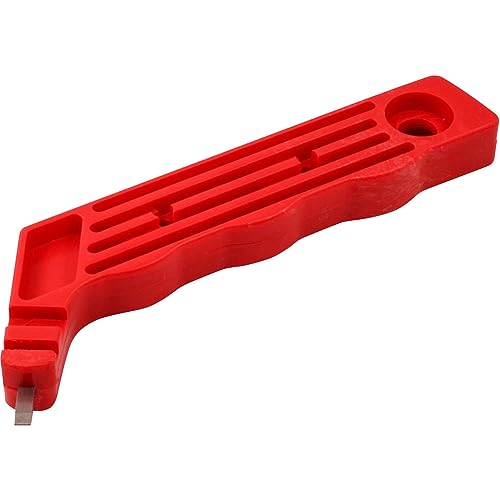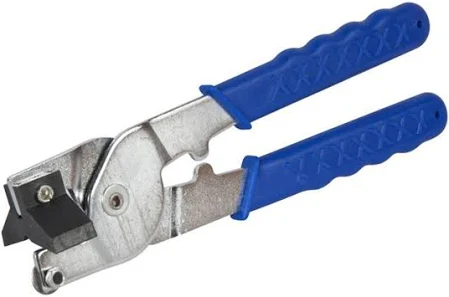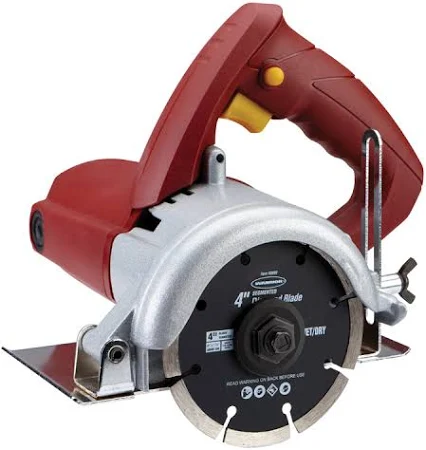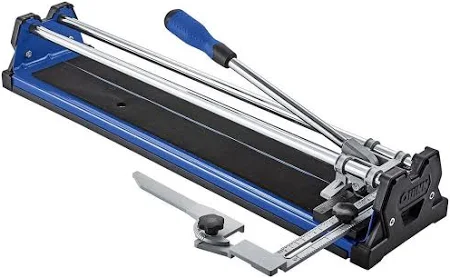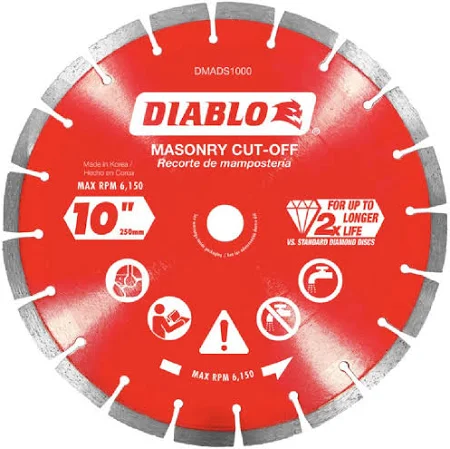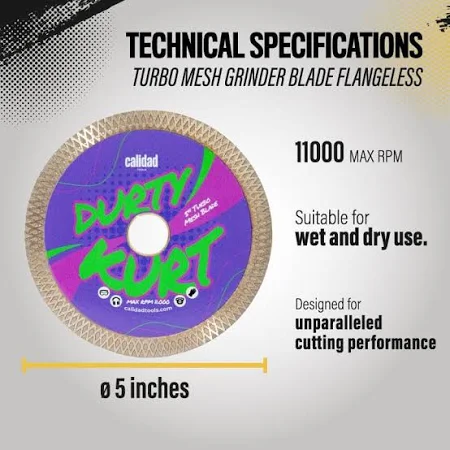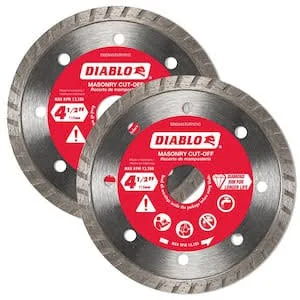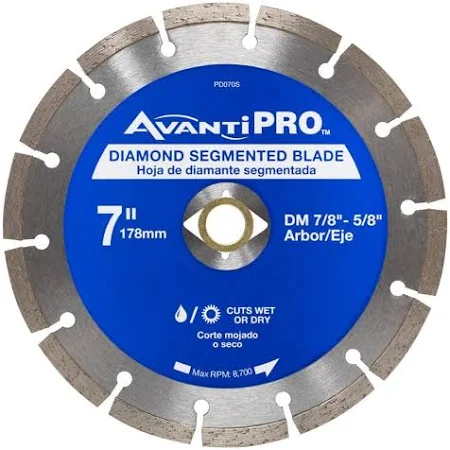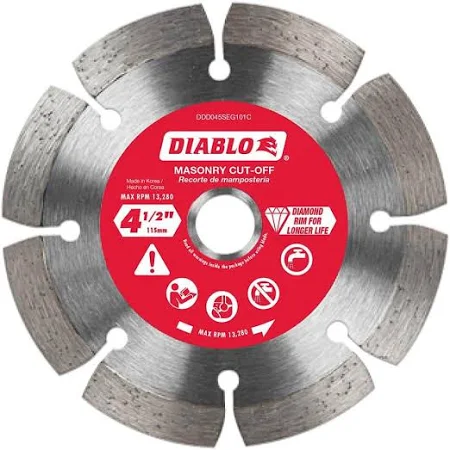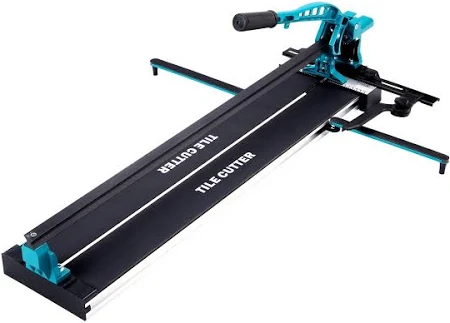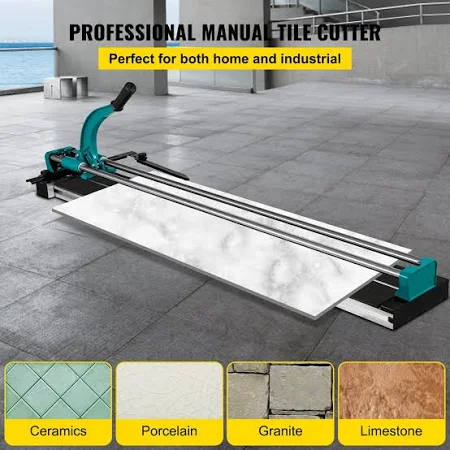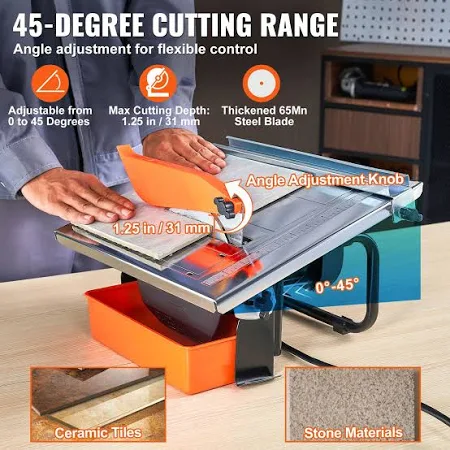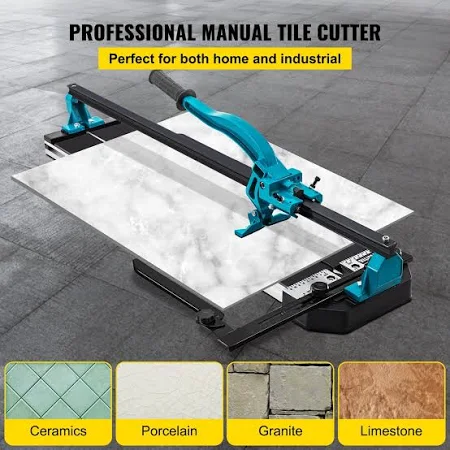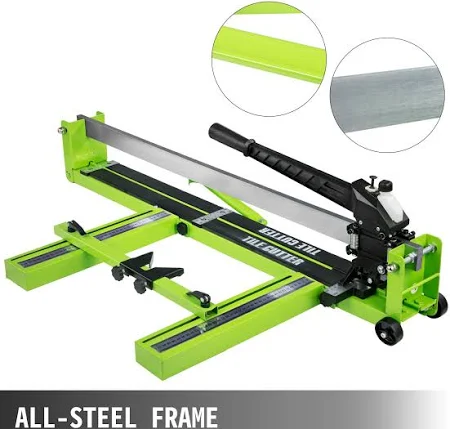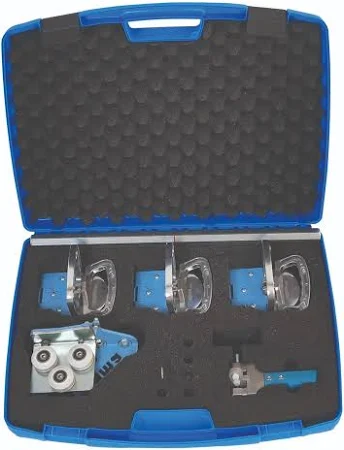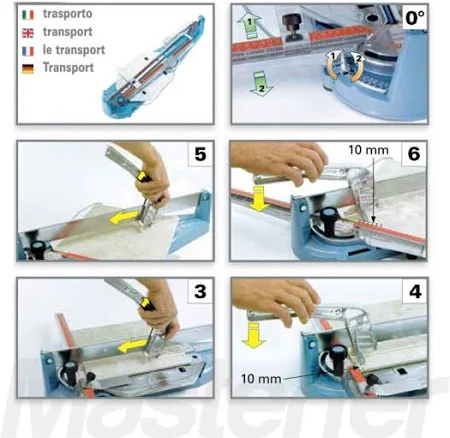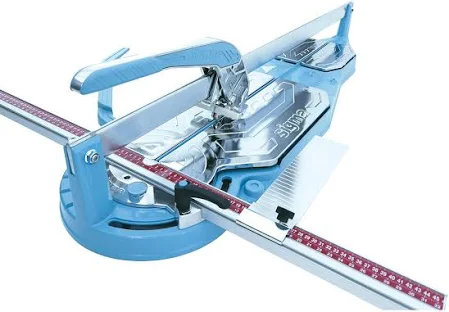Introduction
When tackling large tiling projects, whether as a DIY enthusiast or a professional, the right tools can make a significant difference in both the ease of the job and the quality of the finish. A 48-inch tile cutter is indispensable for efficiently handling large tiles, which are increasingly popular in modern architectural designs. These cutters come in various forms, including manual models and electric tile saws, each suited for different types of tiles and project scales.
Importance of Using a 48-Inch Tile Cutter
- Handling Large Tiles: As sizes like 48 x 48 floor tiles become more common in both residential and commercial spaces, the need for a 48-inch tile cutter becomes evident. These cutters allow for precise cuts, reducing waste and ensuring that large tiles fit perfectly into the designated space.
- Versatility: Whether it’s a 48-inch porcelain tile cutter or a more general manual tile cutter, these tools can adapt to various materials, offering flexibility across projects.
- Efficiency: Using the correct size cutter speeds up the tiling process, helping to achieve clean lines and consistent results without the need for excessive manual scoring or adjustments.
Types of 48-Inch Tile Cutters
- Manual Tile Cutters: Ideal for projects where precision and portability are key. Models like the Sigma 3D4M MAX and Montolit Masterpiuma 125P3 are renowned for their durability and ease of use.
- Tile Saws: When dealing with extremely hard or thick materials, such as porcelain or stone, a 48-inch tile saw becomes necessary. The DEWALT D24000S is a popular choice for its powerful motor and large cutting capacity.
Use Cases in DIY and Professional Settings
- DIY Projects: Home renovation enthusiasts often prefer manual tile cutters for their simplicity and lower cost. They are perfect for bathroom renovations, kitchen backsplashes, and flooring installations.
- Professional Use: For commercial jobs requiring hundreds of square feet of tiling, electric tile saws offer the cutting power and endurance needed for prolonged use and tough materials.
By choosing the appropriate 48-inch tile cutter, users can significantly enhance their tiling projects’ efficiency and outcome. Whether opting for a robust manual model from Amazon’s vast selection or a high-end professional tile saw, the investment will pay dividends in saved time and superior results
Products
What is a 48-Inch Tile Cutter?
A 48-inch tile cutter is a specialized tool designed to cut large tiles, typically up to 48 inches in size, which are commonly used in modern flooring and wall applications. These cutters are essential for creating precise, clean cuts across various tile materials, including ceramic, porcelain, and sometimes even stone, depending on the type of cutter. They are available in both manual and electric forms, each with unique features tailored to specific project needs.
Key Features of a 48-Inch Tile Cutter
Cutting Length: The most defining feature of a 48-inch tile cutter is its ability to cut tiles that are up to 48 inches long, making it an ideal choice for handling large-format tiles.
Cutting Wheel: Equipped with a durable cutting wheel, typically tungsten carbide, which allows for scoring the tile to ensure a clean break.
Adjustable Measuring Guide: Most models include an adjustable guide that helps in making repetitive cuts or angled cuts with precision.
Breaking System: A mechanism, usually a lever or a handle, that applies pressure along the scored line to split the tile cleanly.
Types and Examples of 48-Inch Tile Cutters
Manual Tile Cutters:
- Sigma 3D4M MAX: Known for its robust design and ability to cut tiles cleanly with minimal effort.
- Montolit Masterpiuma 125P3: Features a titanium wheel and is celebrated for its precision and ease of transport.
Tile Saws:
- DEWALT D24000S: This electric tile saw supports large tile formats and is preferred for its water containment system and extended cut capacity, making it suitable for cutting thick and hard materials like porcelain and stone.
Comparative Table of Popular 48-Inch Tile Cutters
| Product Name | Type | Cutting Capacity | Special Features |
|---|---|---|---|
| Sigma 3D4M MAX | Manual | Up to 48 inches | Precision cutting, lightweight design |
| Montolit Masterpiuma 125P3 | Manual | Up to 49 inches | Ergonomic design, easy-to-set-up |
| DEWALT D24000S | Electric | Up to 48 inches | Water pump, large cutting capacity, robust construction |
Ideal Use Cases for a 48-Inch Tile Cutter
- Large Residential Projects: Perfect for installing large format tiles in areas like living rooms, kitchens, and outdoor patios.
- Commercial Applications: Essential in settings such as shopping malls, hotels, and office buildings, where large, durable tiles are commonly used for aesthetic and practical reasons.
Choosing the right 48-inch tile cutter involves understanding the specific requirements of your tiling project, including the type of tile material and the precision needed. Whether you opt for a manual cutter for its portability and ease of use or an electric tile saw for its power and versatility, selecting the appropriate model will ensure high-quality results for your tiling projects.
Wet Saw Tile Cutter
Types of 48-Inch Tile Cutters
For professionals and DIY enthusiasts alike, choosing the right type of 48-inch tile cutter is crucial for achieving optimal results in tile installation projects. Below, we discuss the two main types of 48-inch tile cutters: manual tile cutters and tile saws, highlighting their specific applications and benefits.
Manual Tile Cutters
Manual tile cutters are preferred for their portability, ease of use, and efficiency in cutting ceramic and porcelain tiles. They operate without electricity, using a simple score-and-snap technique.
Key Benefits:
- Precision: Allows for extremely accurate cuts with a clean edge, ideal for straight and diagonal cuts.
- Portability: Lightweight and easy to transport, making them suitable for various job sites or home use.
- Cost-Effective: Less expensive than tile saws and do not require consumables like water or electricity.
- Quiet Operation: Unlike tile saws, manual cutters produce no noise, making them ideal for indoor environments where noise could be a concern.
Popular Products:
- Sigma 3D4M MAX: Known for its ability to handle tiles up to 48 inches in length and its durable cutting wheel.
- Montolit Masterpiuma 125P3: Stands out for its precision, with a push scrib handle that aids in smooth scoring.
Tile Saws
Tile saws are the tool of choice for cutting a wide range of tile types, particularly thicker materials like stone or tiles larger than 48 inches that require multiple cuts or complex shapes.
When to Use Tile Saws Over Manual Cutters:
- Material Hardness: Tile saws are essential when cutting very hard or dense materials, such as stone tiles, which manual cutters cannot handle efficiently.
- Complex Cuts: Ideal for projects requiring L-cuts, U-cuts, or multiple small pieces from a single large tile.
- Volume: Best for large-scale projects where the volume of tiles to be cut would be impractical for a manual cutter.
Key Benefits:
- Versatility: Capable of making a variety of cuts that manual cutters cannot achieve.
- Power: Electric operation provides consistent strength to cut through hard materials without physical strain.
- Water Usage: Water-cooled blades minimize dust and help achieve smoother cuts.
Popular Products:
- DEWALT D24000S: Offers a sliding table that supports large tiles and includes an integrated water system to reduce dust and cool the blade.
Comparative Table of 48-Inch Tile Cutter Types
| Feature | Manual Tile Cutter | Tile Saw |
|---|---|---|
| Best Used For | Ceramic and porcelain tiles | All tile types, including stone |
| Operation | Manual score and snap | Electric cutting with water cooling |
| Ideal Project Size | Smaller or medium projects | Large projects or complex cuts |
| Cost | Lower initial cost | Higher initial cost, plus maintenance |
| Noise Level | Quiet | Noisy, requires ear protection |
Choosing the Right 48-Inch Tile Cutter
Selecting between a manual tile cutter and a tile saw depends largely on the specific needs of your project. For simpler, straight cuts on ceramic or porcelain, a manual tile cutter like the Sigma 3D4M MAX or Montolit Masterpiuma 125P3 is highly effective. For more demanding tasks involving hard materials or intricate cuts, the DEWALT D24000S provides the necessary power and precision. Each tool offers distinct advantages that can help streamline the installation process, reduce waste, and ensure a professional finish.
Large Format Tile Cutter
How to Use a 48-Inch Manual Tile Cutter
Using a 48-inch manual tile cutter effectively requires understanding the proper setup and operation techniques to ensure precision and safety. Here is a step-by-step guide specifically tailored for large format tiles using renowned products like the Sigma 3D4M MAX or Montolit Masterpiuma 125P3.
Step-by-Step Guide
1. Prepare the Workspace:
- Ensure a clean, stable, and flat surface to work on.
- Position the tile cutter on a robust table or a workbench that can support the size and weight of the tile.
2. Measure and Mark the Tile:
- Use a measuring tape and a non-permanent marker to accurately mark where you need to cut the tile.
- Align the tile on the cutter, ensuring the mark lines up with the cutting wheel.
3. Scoring the Tile:
- Place the tile glaze-side up in the cutter. Adjust the guide to ensure it’s square against the cutter’s fence for straight cuts.
- Apply even pressure on the handle, and push or pull the scoring wheel across the tile from one end to the other in one smooth motion.
4. Snapping the Tile:
- After scoring, position the breaking foot exactly at the end of the scored line.
- Press down firmly on the handle to snap the tile along the scored line. This should result in a clean, straight cut.
5. Check and Finish:
- Remove the cut piece and inspect the edge. If there are any small uneven sections, use a tile file to smooth them out.
- Clean the cutter’s rails and wheel periodically to maintain optimal performance.
Tips for Best Results
- Do not rush the scoring process. A consistent and controlled score will yield the best snap.
- Regularly replace the cutting wheel to ensure clean cuts, as dull wheels can lead to tile damage.
How to Cut 48-Inch Tiles
Cutting large 48 x 48 floor tiles can be challenging due to their size and the precision required. Here’s how to manage this task with a manual tile cutter.
1. Prepare the Tile and Cutter:
- Given the large size, ensure you have sufficient space to maneuver and support the entire tile during the cutting process.
- Clean the surface of the tile and the cutter to remove any debris that might affect the cut.
2. Marking the Tile:
- Measure and mark your cut line clearly on the tile using a straight edge and a china marker, which provides visibility and is wipeable.
3. Scoring the Tile:
- Align the tile on the cutter, ensuring that the full length of the cut is supported by the base of the cutter.
- Use a firm, consistent pressure to score the tile once from edge to edge, ensuring the score is deep enough, especially for porcelain tiles.
4. Breaking the Tile:
- Carefully position the breaking foot near the edge of the scored line. Ensure the tile is fully supported and stable.
- Apply a steady downward force on the handle until the tile snaps along the scored line.
5. Finishing Touches:
- Inspect the edge of the cut, and if necessary, smooth any rough areas with a rubbing stone or sandpaper.
- Clean the cutter and store it properly to ensure longevity.
Tools and Materials:
- Tile Cutter: Sigma 3D4M MAX or Montolit Masterpiuma 125P3
- Measuring Tape, Marker, and Straight Edge: For accurate marking.
- Rubbing Stone or Sandpaper: For finishing edges.
This detailed guide should equip you with the knowledge to handle large 48-inch tiles effectively, ensuring professional results whether you’re updating your home or tackling a large-scale commercial project.
Small Tile Cutter
How to Score Tile by Hand
Scoring tile by hand is a fundamental skill for both DIY enthusiasts and professional tilers, especially when working with large format tiles like 48-inch porcelain ones. The process involves marking and then creating a shallow cut on the tile surface, which helps in making a clean break. Here’s a detailed guide on how to manually score tiles, particularly when dealing with large and more delicate materials.
Tools and Techniques for Scoring Large Porcelain Tiles
1. Selecting the Right Cutter:
- For large porcelain tiles, choosing the Best Tile Cutter For Porcelain is crucial. Tools designed for large format tiles, like the Large Format Tile Cutter, provide the necessary support and precision.
2. Preparing the Tile:
- Before scoring, ensure the tile is clean and dry. Any dirt or particles can affect the scoring line and the overall finish.
3. Marking the Tile:
- Use a straight edge and a grease pencil to mark where you will score the tile. Accurate marking is essential to ensure the tile fits the intended space, especially when learning How To Tile a Shower or any other precise tiling job.
4. Scoring the Tile:
- Place the tile on a stable, non-slip surface. Align the tile cutter at the mark, and apply even pressure as you pull the cutter along the mark. The score should be a single, uninterrupted line.
- Tools like the Sigma Tile Cutter 24 Inch or the Vevor Tile Cutter are perfect for smaller cuts, whereas a Brutus Tile Cutter can handle thicker and larger tiles.
5. Snapping the Tile:
- After scoring, position the tile on the cutter base, aligning the scored line with the breaking ridge. Press down firmly on the handle to snap the tile along the scored line. This step requires precision to avoid any uneven breaks.
Complementary Cutting Techniques
Wet Saw Cutting:
- When manual scoring isn’t suitable for very thick or extremely hard tiles, using a Wet Saw Tile Cutter can provide a clean cut without risking tile damage.
- The Electric Tile Cutter, equipped with a Diamond Blade For Grinder, offers a powerful alternative for cutting challenging tile materials.
Finishing the Edges:
- After making the initial break, smooth any rough edges with a tile file or sanding stone to prepare the tile for installation. This is particularly important when prepping for grouting, detailed in the guide on How To Grout Tile.
Learning More:
- For beginners or those looking to refine their skills, understanding the overall cutting process is beneficial. Guides like How To Cut Tile provide comprehensive insights and tips for various cutting scenarios.
Scoring tile by hand is an art that combines skill with the right tools. By following these steps and using appropriate equipment, you can achieve professional results, even with challenging projects involving large, delicate tiles. Whether you’re installing a new floor or updating a kitchen backsplash, mastering this technique is crucial for a successful tile installation.
Brutus Tile Cutter
FAQs
How to use a tile cutter correctly?
- First, measure and mark the tile where you need to make the cut. Place the tile in the cutter, aligning the cutting wheel with your mark. Score the tile by pushing or pulling the lever (depending on the model) across the tile once, applying even pressure. Then, use the breaker to snap the tile along the scored line.
How thick can a tile cutter cut?
- Most manual tile cutters can handle tiles up to 12mm thick. For thicker tiles, such as some porcelain or stone tiles, a wet saw may be required.
How do you measure for tile cuts?
- Use a tape measure to determine the dimensions of the space where the tile will be placed. Subtract the width of the grout line to find the exact size needed, then mark these measurements on the tile using a pencil or chalk.
Why is my tile cutter breaking tiles?
- This could be due to uneven pressure during scoring, a blunt cutting wheel, or attempting to cut a tile that’s too thick or hard for the manual cutter’s capabilities.
Do you push or pull a tile cutter?
- It depends on the model. Some manual cutters are designed to push the cutting wheel across the tile, while others are pulled toward the user.
Is it better to cut tile wet or dry?
- Wet cutting is preferable for reducing dust and cooling the cutting blade, which is especially important for hard or thick tiles like porcelain or stone to prevent chipping and heat damage.
What is the hardest tile to cut?
- Porcelain tiles are generally considered the hardest to cut due to their density and hardness.
What is the best method to cut tile?
- The best method depends on the type of tile and the cut’s complexity. For straight cuts in ceramic and porcelain, a manual tile cutter is efficient. For complex cuts, curves, or very hard materials, a wet saw is ideal.
Do manual tile cutters work well?
- Yes, for most ceramic and some thinner porcelain tiles, manual tile cutters provide quick, accurate straight cuts.
How to mark tiles for cutting?
- Use a straight edge and a pencil or chalk to mark where you want to cut the tile, ensuring the lines are clear and accurate for precise cutting.
What is the minimum width for a tile cutter?
- Tile cutters can typically handle cuts as narrow as 1 inch, but this can vary based on the design and quality of the cutter.
How do you calculate tile size?
- Measure the area where tiles will be installed. Consider the size of the tiles and the space for grout lines. Divide the total area by the size of one tile to determine the number of tiles needed, adjusting for partial tiles and cutting waste.
How to avoid chipping tile when cutting?
- Use a sharp cutting wheel, apply even pressure when scoring, and ensure the tile is well-supported. For very hard tiles, a wet saw with a diamond blade is recommended.
What is the hazard of cutting tiles?
- Hazards include sharp edges, flying debris, and dust. Always wear safety glasses, gloves, and a dust mask, and use tools properly to minimize risks.
Why won’t my tile cutter cut?
- This might be due to a dull cutting wheel, improper use of the tool, or attempting to cut a tile type that’s not suitable for your cutter.
Do you cut tile face down?
- Tiles are typically scored face up to ensure the precision of the line, though some professionals may cut certain types of back-mounted tile mesh face down to avoid chipping.
Do you put water in a tile cutter?
- For manual tile cutters, no water is needed. Water is used in wet saws to cool the blade and reduce dust.
Do you cut tile as you go?
- Yes, measure and cut tiles as you go to ensure they fit precisely, especially around obstacles or at the edges of the room.
How do you cut tile evenly?
- Use a proper tile cutter, ensure consistent pressure when scoring, and use guides to keep cuts straight. Check measurements twice before cutting.
Should you soak tile before cutting?
- Soaking is not typically necessary for most tiles but can help make cutting easier and minimize dust for some types, like traditional terracotta.
What is the difference between porcelain and ceramic tile?
- Porcelain tiles are made from more refined clay and fired at higher temperatures, making them denser and more durable than ceramic tiles, which are easier to cut and install but less resistant to wear and tear.

